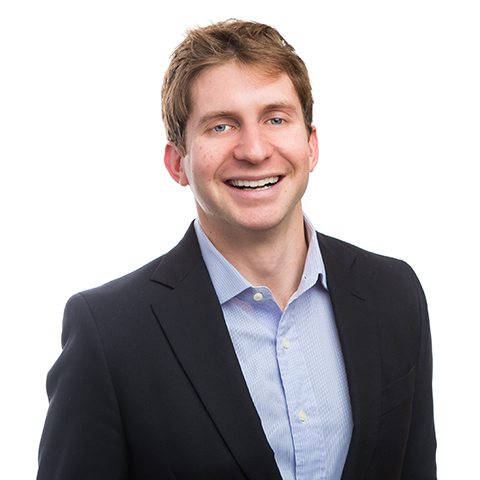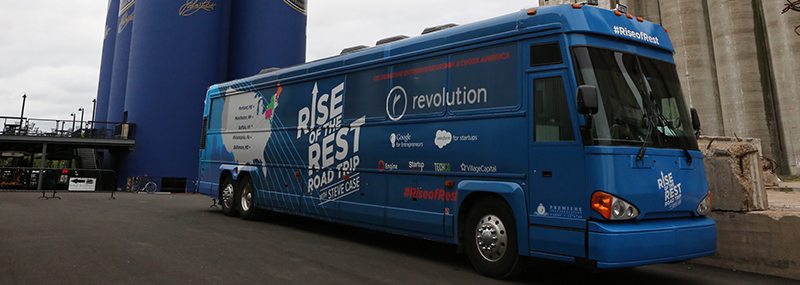This article originally appeared in the Huffington Post on December 17, 2015.
Supporting the vibrancy of local economies outside of large metropolitan areas is not a new policy objective. It is embedded into the fabric of the United States. As Phillip Longman pointed out in a recent Atlantic piece, the founders created the Senate, in part, to ensure smaller and less populated states had a chance to fully take part in the American experiment. The Constitution contained the Postal Clause which guaranteed the delivery of mail to remote communities. After the advent of the railroad, Congress passed the Interstate Commerce Commission in 1887 to protect smaller communities from rail rate price discrimination, and later the Federal Reserve system situated member banks in numerous cities so that not all monetary policy would be conducted in New York. Taken together, these efforts — and others including varying pieces of antitrust legislation as well as regulatory regimes for public utilities — ensured innovation could be churned out of different corners of the country.
As the world became more globalized in the 1970s and 1980s, many of these policy prescriptions were reformed. But in recent years a critical shift around regional entrepreneurship has started to take hold thanks to a confluence of factors. With barriers to entry falling, public policy changes taking effect — most notably the implementation of securities-based crowdfunding in the JOBS Act, and a growing awareness around the importance of startups, greater geographic parity of venture dollars and high-growth firm formation looks poised to follow.
And that shift is important for regional and overall U.S. economic competitiveness. More geographic diversity of new enterprises which create roughly all net new jobs in the economy, particularly “gazelles” which are the top-performing 1 percent of startups yet generate around 40 percent of new job growth, has the potential to stimulate economic growth in cities like St. Louis, Kansas City, and Pittsburgh.
Since 2014 the Revolution team led by Steve Case has visited 19 “Rise of the Rest” cities to observe these new trends at a granular level, and along the way, invested $2 million in 19 early-stage startups. After traversing 4,000 miles by bus we have met founders building companies in an array of sectors, as well as local leaders addressing myriad challenges of fostering startup activity in their particular ecosystems.
The most common questions we hear is also the most vexing: “what are you seeing out there that is working well?” It is difficult to answer — how do you compare a Pittsburgh successfully transitioning from heavy manufacturing to health technology, education, and advanced manufacturing to a mid-Atlantic city like Richmond that is trying to build on its talented workforce especially within financial services?
The answer, in terms of enabling a city’s startup ecosystem to grow regardless of size, workforce differences, or core industry strength, is that we have seen four tactics that work especially well across the board:
1. Local Authenticity is Key
Given where we are in the business cycle and lofty tech valuations in private and public markets, we’re seeing many seed-stage companies doing slight variations of what other startups are already doing — many “Uber’s for X.” That’s why local authenticity is increasingly becoming a competitive advantage: founders who harness a city’s local assets, DNA, and sheer character are well positioned to succeed.
Artiphone, which won a Rise of the Rest investment in Nashville, is a prime example. Mike Butera lived on Music Row in Nashville when he came up with the idea of a smart-device, musical instrument. Mike tapped the expertise of those in the city’s growing tech scene, including at the Nashville Entrepreneur Center, and musicians in the city’s arts scene. Artiphon raised the most money in history for a musical instrument, Kickstarter campaign and was named by TIME Magazine as a top 25 Best Invention of 2015.
Wealthforge is another example: Fred Bryant and Mat Dellarso are harnessing Richmond’s DNA as a banking and finance hub to scale a Fintech business that leverages technology to attack the process of making private placement investments. Two more later stage companies show why local authenticity adds value: Shinola, which launched in Detroit (celebrating a “Where America is Made” ethos) and is growing rapidly, employs former auto workers retrained to craft handbags, bicycles, watches, and other products. OrderUp was founded in Baltimore to solve for offering the on-demand economy to smaller markets – earlier this year the company was acquired by Groupon.
2. Government Matters
In terms of creating the conditions for a more vibrant startup economy to take hold, and signaling to founders that their city is going to be supportive as they grow their businesses, we’ve seen where government can make a positive difference.
Buffalo is a case study. As the city’s manufacturing base started a steady decline in the 1970s it led to a dramatic decline of population and GDP. A long period of struggle ensued with a once, regional powerhouse — the thriving, Western Terminus of the Erie Canal — losing its vibrancy.
Today, thanks in part to a significant public investment from Governor Andrew Cuomo’s Administration via his Buffalo Billion initiative, private funding has been lured off the sidelines with a combined $5.5 billion going into the city in a handful of years. Erie County’s unemployment rate is the lowest in a quarter century. From a new Solar City plant to new incubators and accelerators including Z80Labs, dig, Vcamp, and the world’s largest business plan competition, 43North — public policy is encouraging a new generation of college grads and innovators (from the region’s 22 schools) to stay in Buffalo and start or join new businesses.
Philadelphia has a “scrappy” startup scene that is gaining traction by leveraging a college-educated population, the arrival of early stage funds, and the success of growth companies including RJ Metrics and Curalate. Outgoing Mayor Michael Nutter became a fierce proponent of startups in Philadelphia. His StartupPHL initiative, which is comprised of $6 million of public and private monies managed by Josh Kopelman at First Round Capital, is investing in early stage tech companies. The mayor’s voice and presence on behalf of startups has sent a powerful signal that Philadelphia can create an environment for founders to grow their business, rather than relocate along the Amtrak corridor to New York or Boston.
Even New Hampshire, one of the smallest states we’ve visited, once home to the proudest millyards in the U.S., is showing signs of an emerging startup economy. The “live free and start” initiative, with the backing of the Governor, is celebrating the individualism of New Hampshire residents and leveraging core assets like life sciences and Dartmouth’s Den Innovation Center to keep talented graduates in the state.
There are small gestures public officials can make as well that go a long way. When a startup has an exit, raises a new round of funding, or closes a big deal, it sends a message to the startup community when a Mayor, or Governor, makes an “event” out of the occasion – which we have seen in various cities. And local policies that support innovation from allowing Uber, Airbnb, and late-night public transport creates a friendlier environment for younger people considering living in a city and building a business.
3. Density Does Wonders
As technology continues to transform the traditional one worker to one employer paradigm, and an increasing share of the workforce holds part-time roles for multiple platforms, cities that leverage the talents of the creative, innovative, makers in their community — under one roof — will create a virtuous cycle. And one way to de-risk the proposition of launching or joining a startup is to do so surrounded by people in similar boats. Not only does creating physical work spaces for founders, workers, and investors enable ideas and talent to mesh, but they make working at a startup more fun which is meaningful for an entrepreneur trying to hire an engineer deciding between an early stage company or a large corporation.
East of the Mississippi, Durham’s American Tobacco Campus, a revitalized historic tobacco campus turned office space with 300 startups within a five minute walk of one another, is the best example. Over the past two years the campus has seen seven companies exit for a combined $1.5 billion. Much of those funds will go back to founders, early employees, and investors who will, in turn, back new companies in Research Triangle. The campus is always buzzing with parties, events, and entrepreneurs tinkering late into the night.
Buffalo’s Niagara Medical Campus is another good example of density: it’s home to founders and innovators working on companies and ideas within D!G, Z80Labs, and 43North, all housed under one roof. A few other promising examples of efforts to build density:
- In Baltimore, CityGarage was recently opened – a 133,000 square foot innovation hub envisioned and brought to life by Under Armour founder Kevin Plank. The site will house a maker space, acceleration communities, and Under Armour’s Innovation labs.
- Cincinnati’s community catalyst, Cintrifuse, serves over 100 startup members with more than 30 ecosystem partners and 75 mentors and advisors.
- COCO, Minneapolis’ local hub for entrepreneurs, plans a significant expansion in terms of locations and programming over the coming year.
4. Convening Helps
While leveraging local authenticity, government policy, and physical density faces varying degrees of difficulty depending on the city, creating a convening mechanism – an event or festival that brings together local leaders and outside capital – is something any city can do. It helps to spur startup activity, as well.
Celebrating the innovators, entrepreneurs, investors, and public officials working on these issues and succeeding, in front of media, is an effective way to build a city’s brand and bring creative people together to collaborate. Maine’s Startup and Create Week brings together more than 3,000 investors, founders, designers, and forward thinkers from over 27 states to learn, become inspired, and network. That’s a significant showing given the population of Portland is around 66,000. Indeed Portland has much to show these days: CashStar recently closed a $15 million round, Vets First Choice, raised a $52 million round, and Rapport won a $100,000 investment during the Rise of the Rest trip.
New Orleans Entrepreneur Week (NOEW) in March, nestled between Mardis Gras and Jazz Fest, celebrates innovation, entrepreneurship, and new ideas in the heart of New Orleans. Indeed part of the thesis for NOEW is that New Orleans’s future will need to be dreamed up and created by entrepreneurs in New Orleans. Last March over 10,000 people attended.
A few other noteworthy convening events:
- In Charleston, Dig South is the an interactive festival that connects brands, startups, and investors.
- Light City Baltimore in April is a festival of art, music, and innovation, to share ideas and bring people together.
- Iowa hosts Entrefest in May, the largest gathering of entrepreneurs and innovators in the state with around 750-1,000 founders, corporates, and small business owners from across the region.
- In Madison the entrepreneur-led Forward Festival drew 3,000 attendees over the course of eight days and 34 events focused on entrepreneurship and innovation.
Given macro trends, new policy prescriptions, and recognition of the critical distinction between small businesses and startups, we’re at the dawn of a new beginning for entrepreneurship outside of Silicon Valley, Boston, and New York. The country’s founders would be proud.




